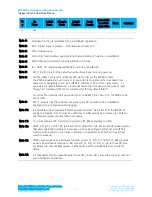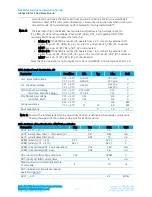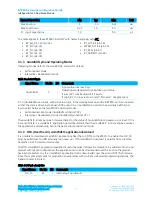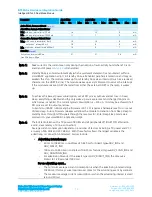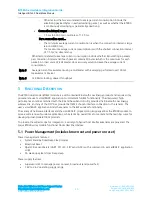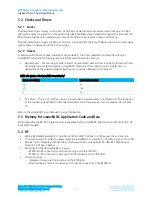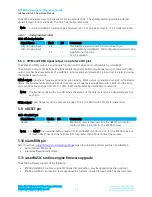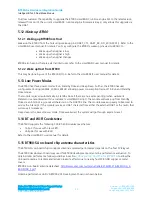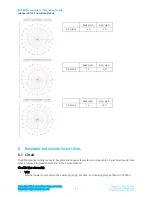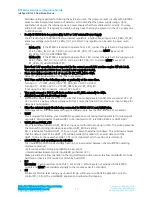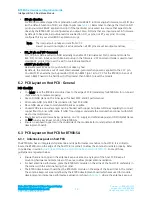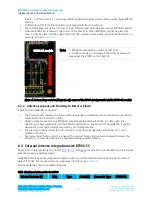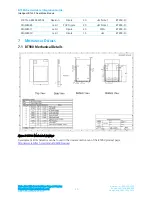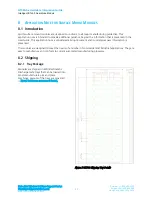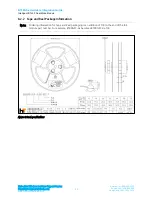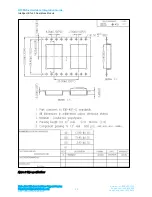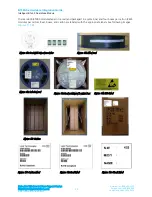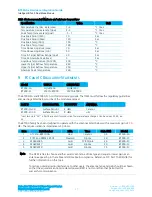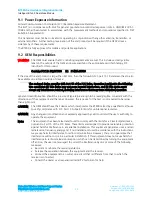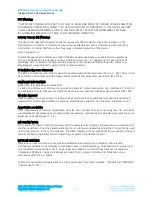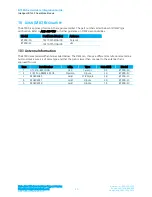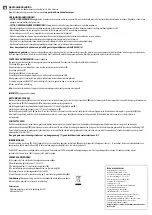
BT900-Sx Hardware Integration Guide
Intelligent BTv4.0 Dual Mode Module
Embedded Wireless Solutions Support Center:
http://ews-support.lairdtech.com
www.lairdtech.com/bluetooth
25
Americas: +1-800-492-2320
Europe: +44-1628-858-940
Hong Kong: +852 2923 0610
To allow customer the capability to upgrade the BT900
smart
BASIC runtime engine FW to the latest version
released from Laird), the current
smart
BASIC runtime engine firmware (v9.x.y.z) only allows this upgrade via
the UART.
5.12
Wake-up BT900
5.12.1
Waking up BT900 from Host
Wake-up the BT900 from the host using wake-up pins (UART_CTS, UART_RX, SIO_20 (ADC01)). Refer to the
smart
BASIC user manual for details. You may configure the BT900’s wakeup pins via
smart
BASIC to:
Wake up when signal is low
Wake up when signal is high
Wake up when signal changes
BT900 also has pins that are external interrupts; refer to the
smart
BASIC user manual for details.
5.12.2
Wake up Host from BT900
This may be done by use of the BT900 SIO pin. Refer to the
smart
BASIC user manual for details.
5.13
Low Power Modes
The BT900 has three power modes: Run, Standby Doze and Deep Sleep. Further, the BT900 has user
configurable clocking (40MHz, 20MHz, 4MHz) allowing power consumption trade-off in Run and Standby
Doze modes.
The module is placed automatically in Standby Doze if there are no events pending (when
waitevent
statement is encountered within a customer’s
smart
BASIC script). The module will wake up from Standby
Doze via an interrupt e.g. received character on the UART Rx line. The module wakes up every millisecond to
service the interrupt. If the module receives a UART character from either the external UART or the radio, that
will cause it to wake up.
Deep sleep is the lowest power mode. Once awakened, the system will go through a system reset.
5.14
BT and Wi-Fi Coexistence
The BT900 supports the following CSR BT-WiFi coexistence schemes:
Unity-3 (for use with Classic BT)
Unity-3e (for use with BLE)
Refer to the
smart
BASIC user manual for details.
5.15
BT900-SA on-board chip antenna characteristics
The BT900-SA on-board chip monopole antenna’s radiated performance depends on the host PCB layout.
The BT900 development board was used for BT900 development and antenna performance evaluation. To
obtain similar performance follow guidelines in section
PCB Layout on Host PCB for BT900-SA
to allow the
on-board antenna to radiate and reduce proximity effects due to nearby host PCB GND copper or metal
covers.
BT900-SA on-board antenna datasheet
http://www.acxc.com.tw/product/at/at3216/AT3216-B2R7HAA_S-
Antenna performance on DVK-BT900-V01 Development board is shown below.


